wfooshee
O, Woe is me!!
This past Tuesday, the 15th, a local photography group I'm in went over to take in a Blue Angels practice session at Pensacola Naval Air Station. They fly a practice every Tuesday and Wednesday and the sessions are open to the public. They have a viewing area with bleachers for about a thousand people, plus flat room for chairs. The viewing area is at the far right end of the runway, behind the Naval Aviation Museum, so it's a different point of view than you get as part of an air show crowd at "show center." We're about a third of a mile from what is actually the show crowd area.
It was mostly sunny when we got there, but the weather turned into high overcast as the show began, although the clouds were high enough not to interfere. Still, they got thicker as the day wore on, making for difficult light for photography.
1. This is the formation taxiing out from the tarmac at show center. The practice session includes everything they do for a public demonstration, including the boarding and startup at the beginning.
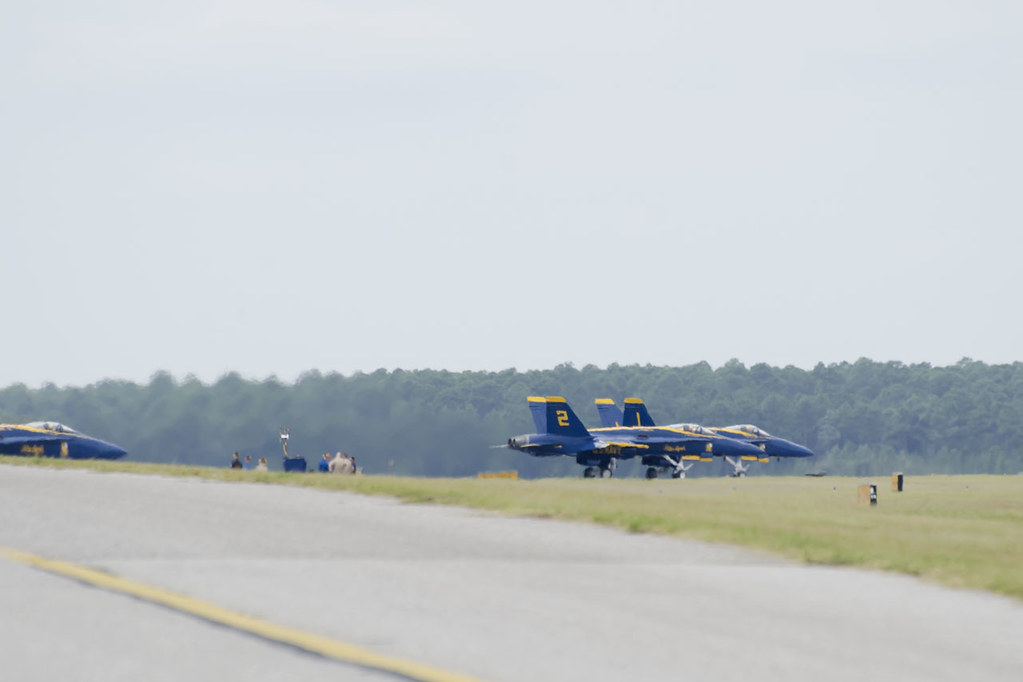
2. Airborne before they reach our position. This is past the regular crowd area.

3. Heat haze from 1 and 2 obscuring 3 and 4.
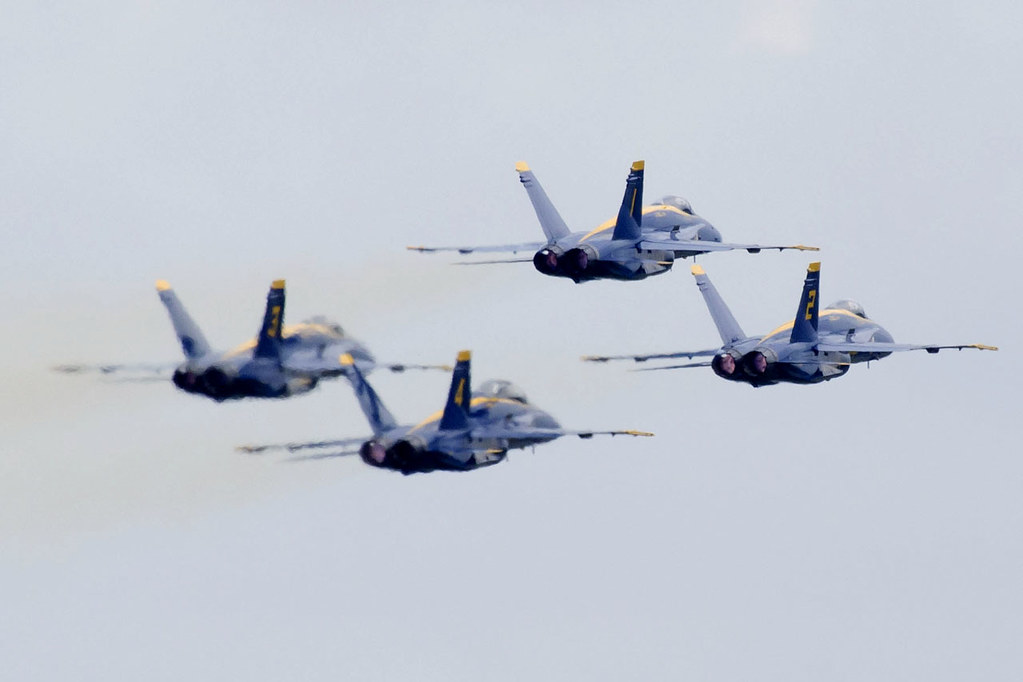
4. The famous photo pass is just a slow circle starting from behind the crowd, coming in from the right, passing in front of the crowd, and exiting to the left in a steady continuous turn. As far right as we are positioned in the practice bleachers the entrance of the pass is very close, which made the formation easy to photograph and gave an interesting change in the initial point of view. Here you can see just how tightly they form for this pass, and you can also see how they offset each aircraft in the formation to the right rather than flying symmetrically, which gives the formation a better view from the perspective of the viewers on the ground. #3 and #4 keep their canopies 18 inches (!!!!!!!) under the wingtips of 1 and 2.
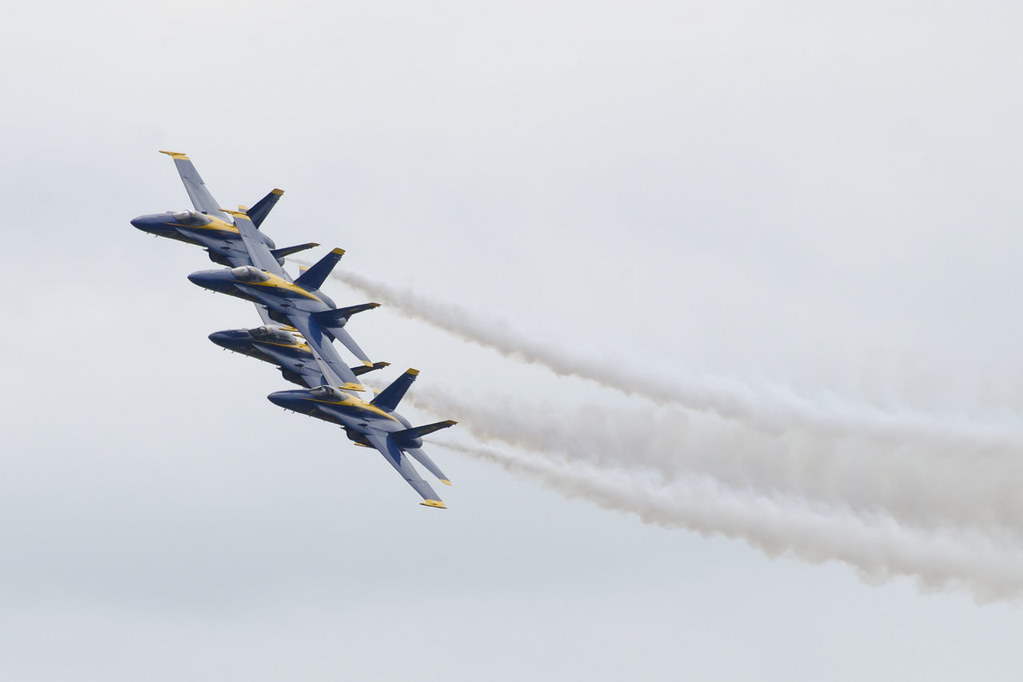
5. Continuing the pass. No room to spare between 3 and 2!
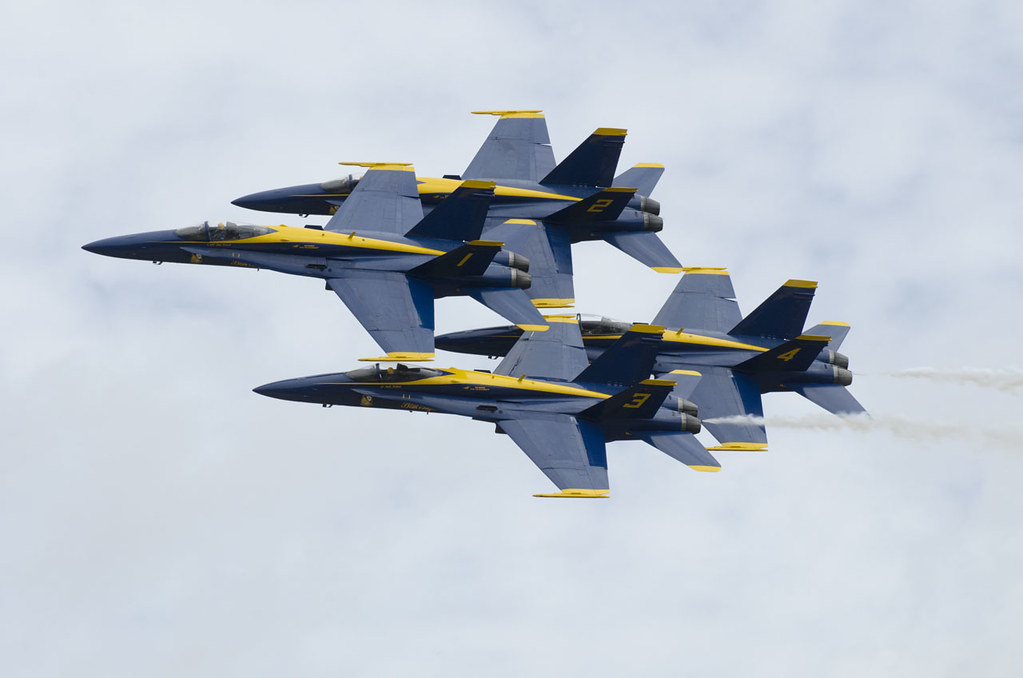
6. OK, that's pretty close there, dude.....
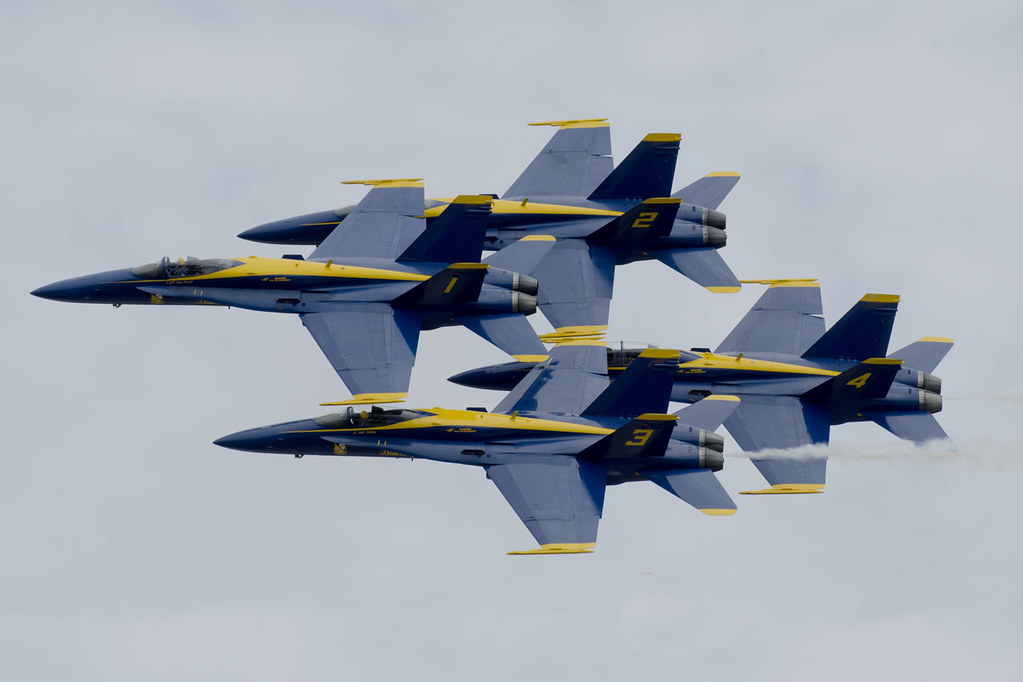
7. OVERLAPPING???!??!??! Seriously ???!??!!!
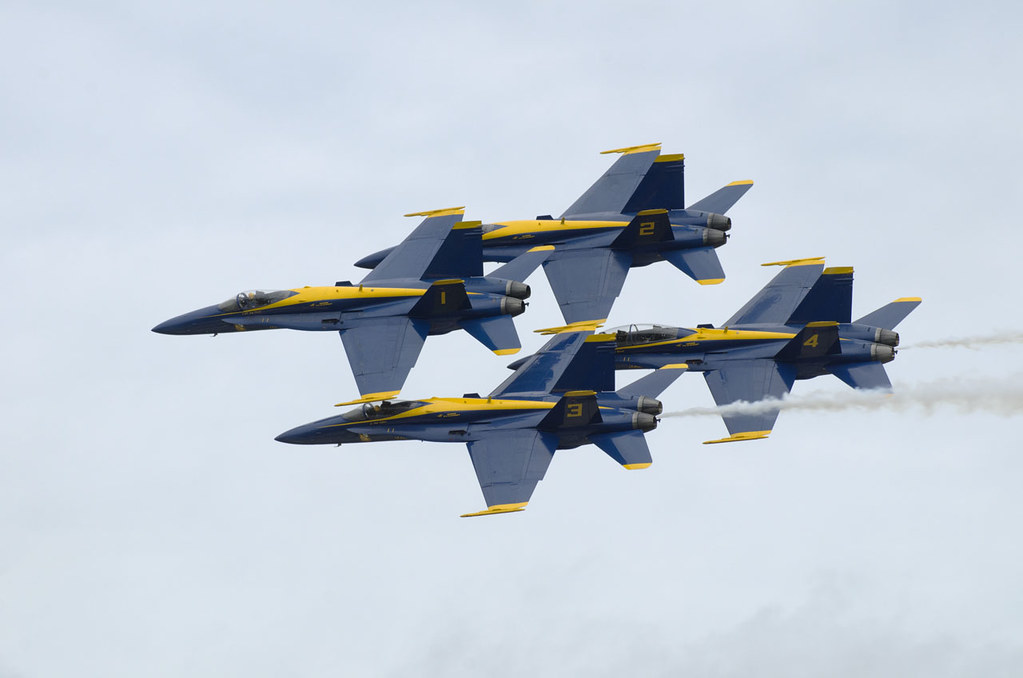
8. This shot from behind the formation shows that we were tricked by the perspective. He's actually got at least a foot, foot-and-a-half to the next guy's wing.....
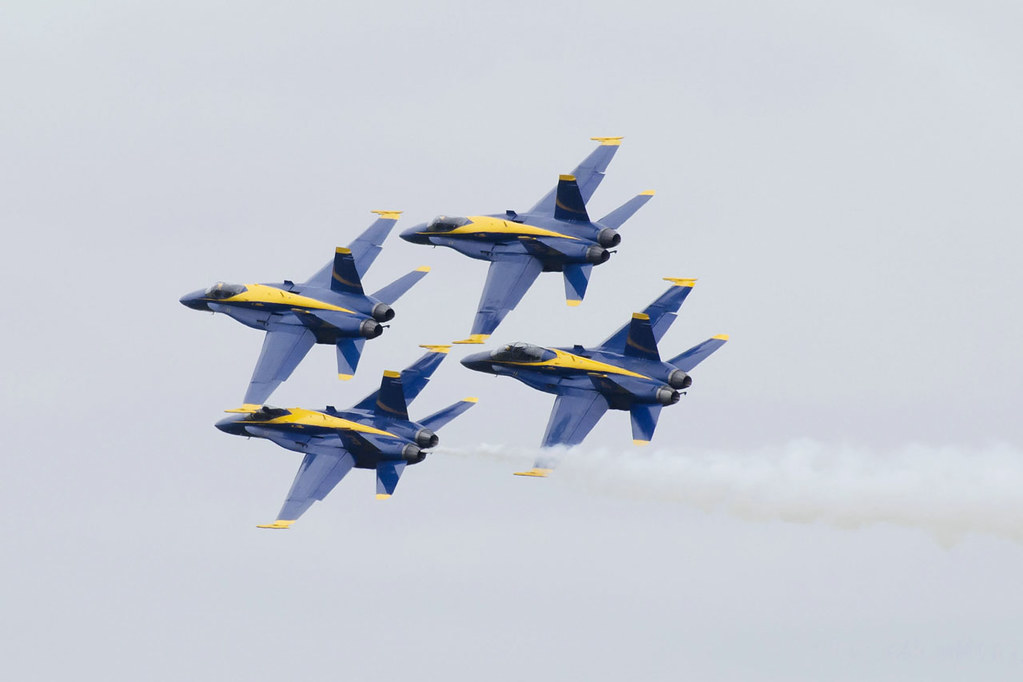
9. "Let's go past them upside down!" "No, I don wanna." "Well, I'm gonna!!!"
Not only that, but with gear and tail hook extended.
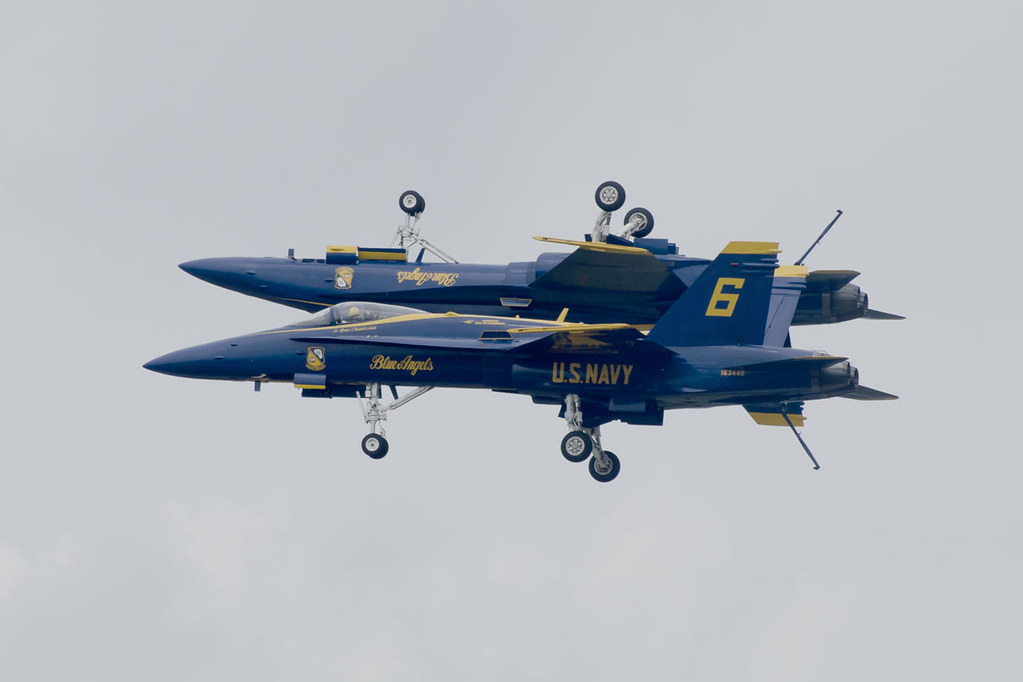
10. And the diamond comes by with half inverted half upright
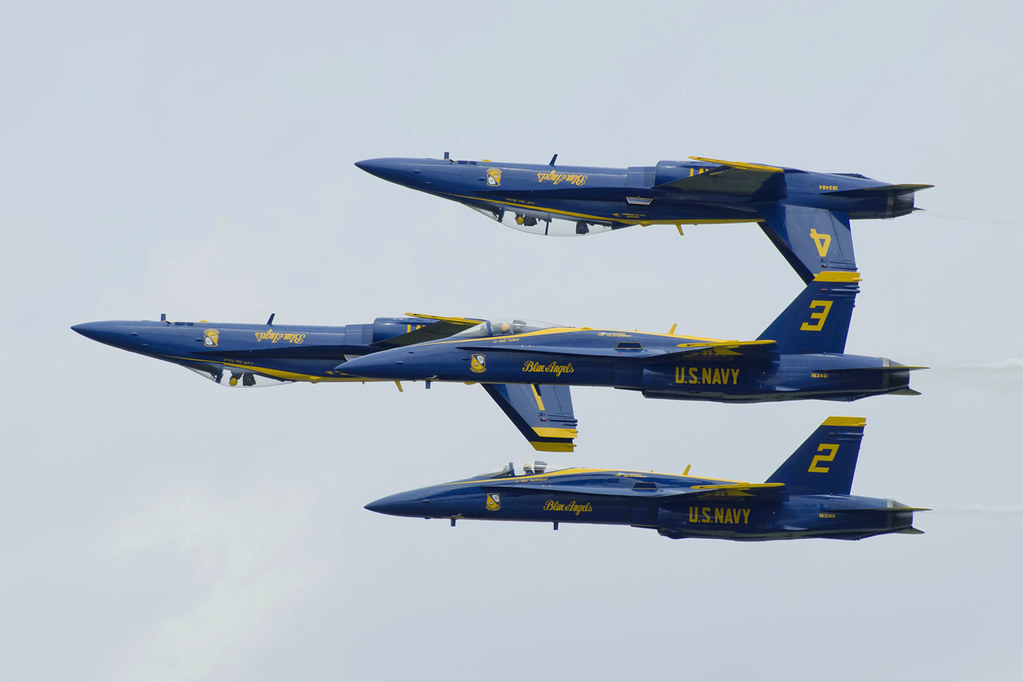
11. A couple of opposing passes by the solos...
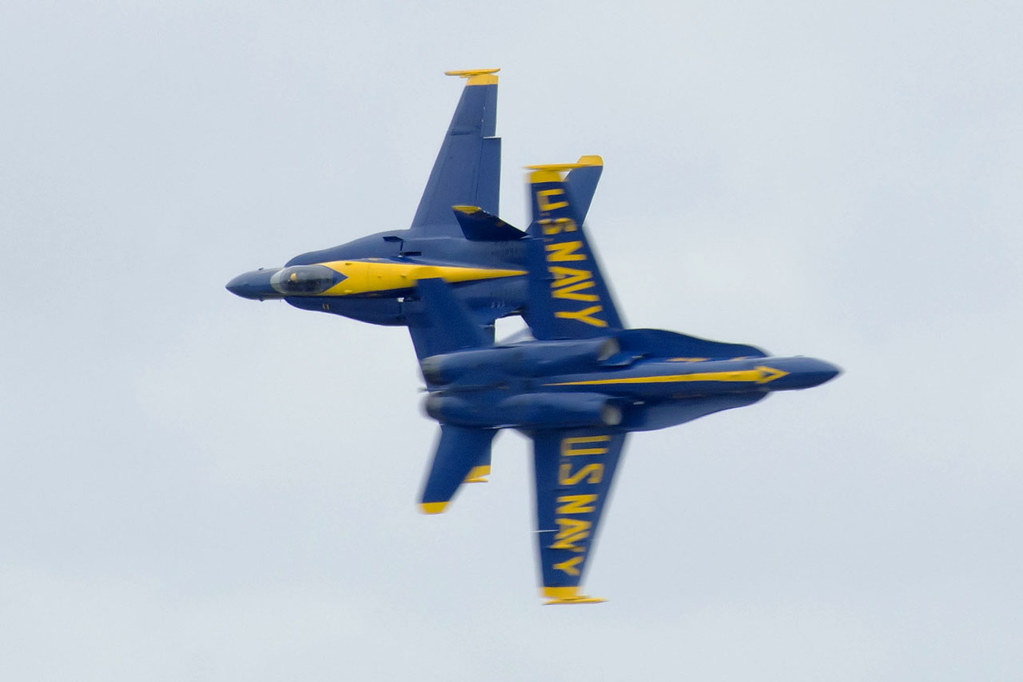
12. In this one they're rolling as they pass

13. A couple of separation breaks the diamond makes
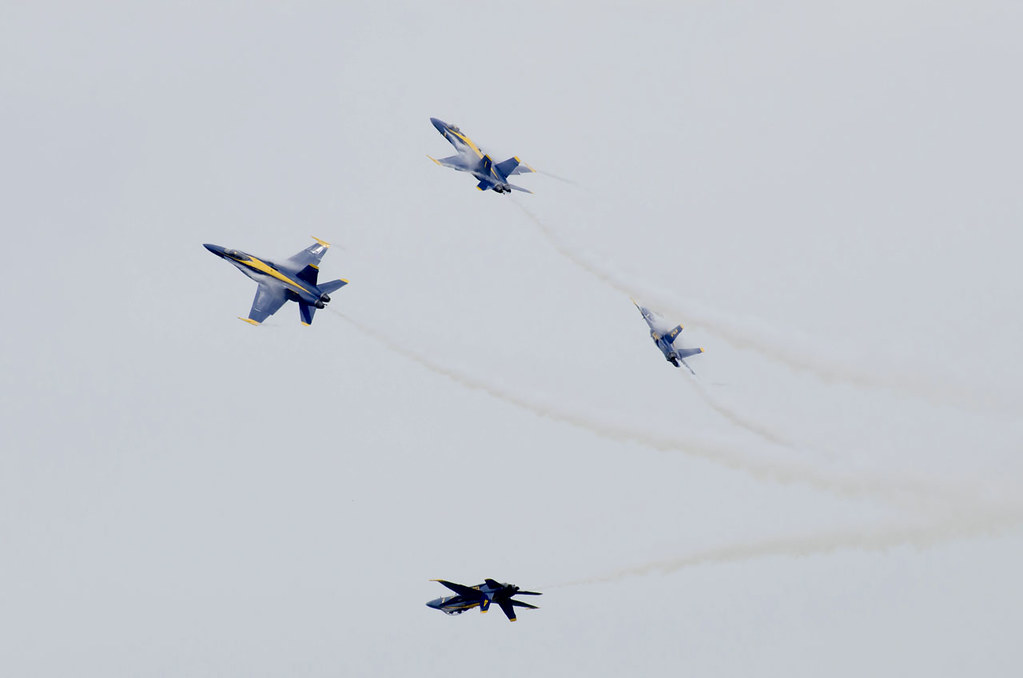
14.
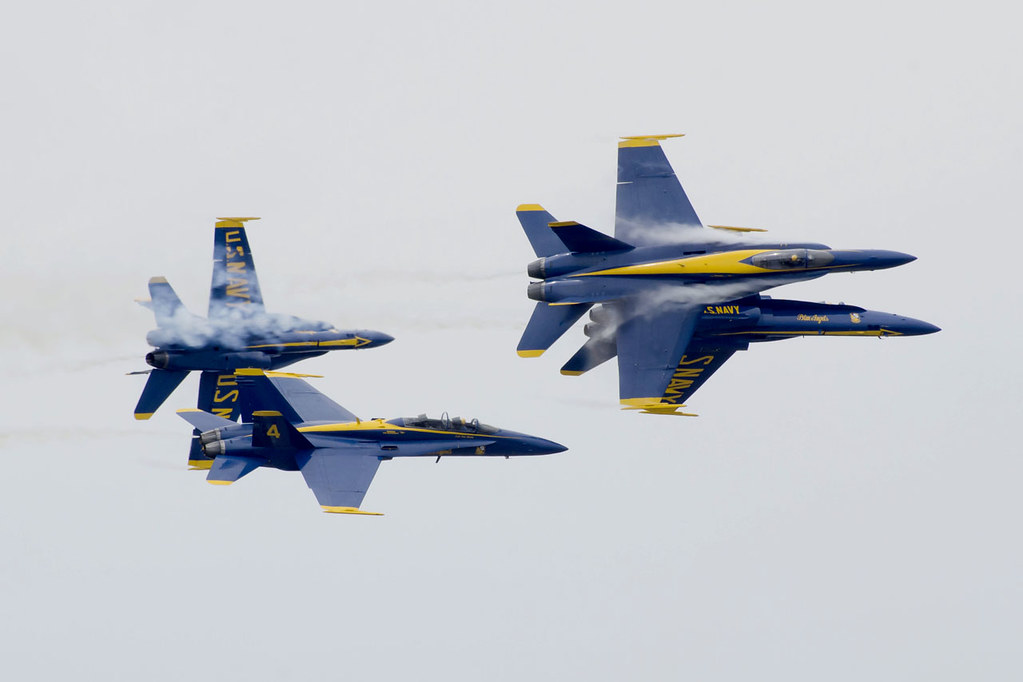
15. One of the solo pilots pulling hard as he exits the flight line
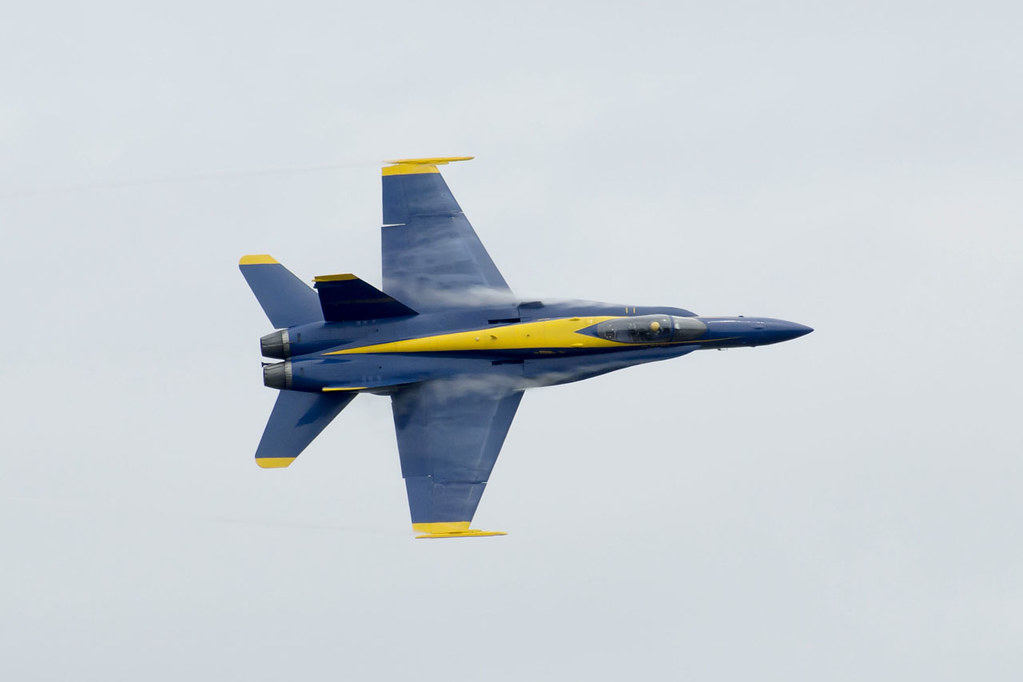
16. The final maneuver of the demonstration is the Loop-Break-Cross, with all six in a delta formation entering a loop from the right.....

17. As they finish the loop, they break on the downward vertical and leave the area in six different directions
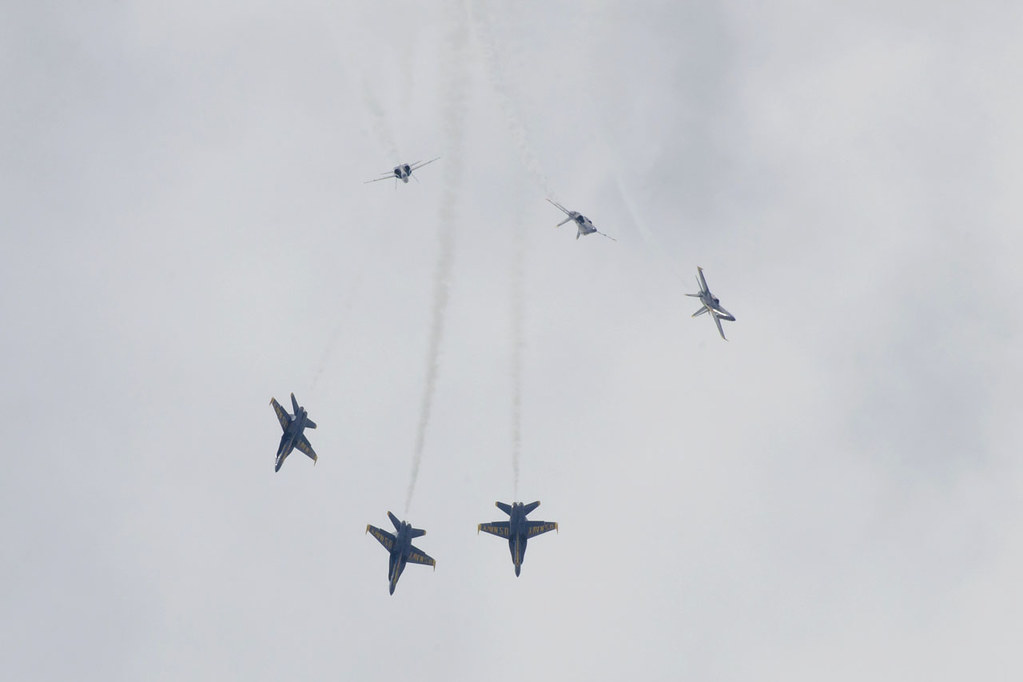
18. Each pilot flies outward about two miles, then does a half Cuban eight, returning to cross simultaneously at show center
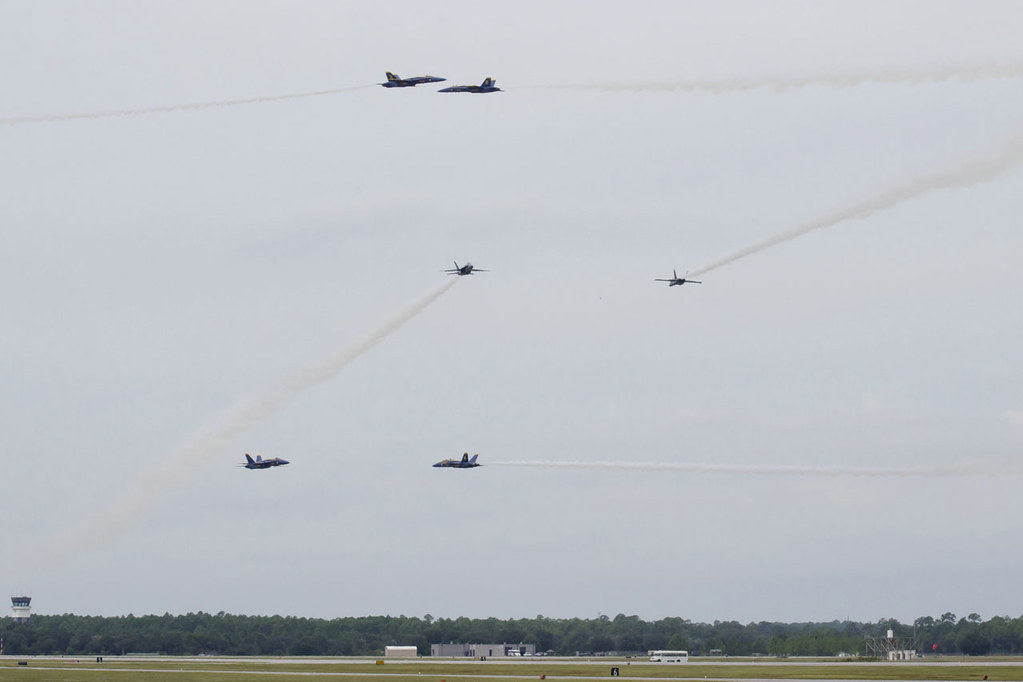
19. And they're not done yet! The leader flies a long circle to the right, making a long left turn to end up coming straight back at the crowd from in front, and the other pilots maneuver as needed to reassemble the delta during that turn, with the reassembly in view of the crowd. It's really cool to be able to watch what each jet has to go through to get back on the leader after the crossing they just did, with everybody going a different direction and having about 30 or 45 seconds to get back in formation. Once the delta is reformed and coming straight at us, they make this dramatic arc-shaped separation as they approach.
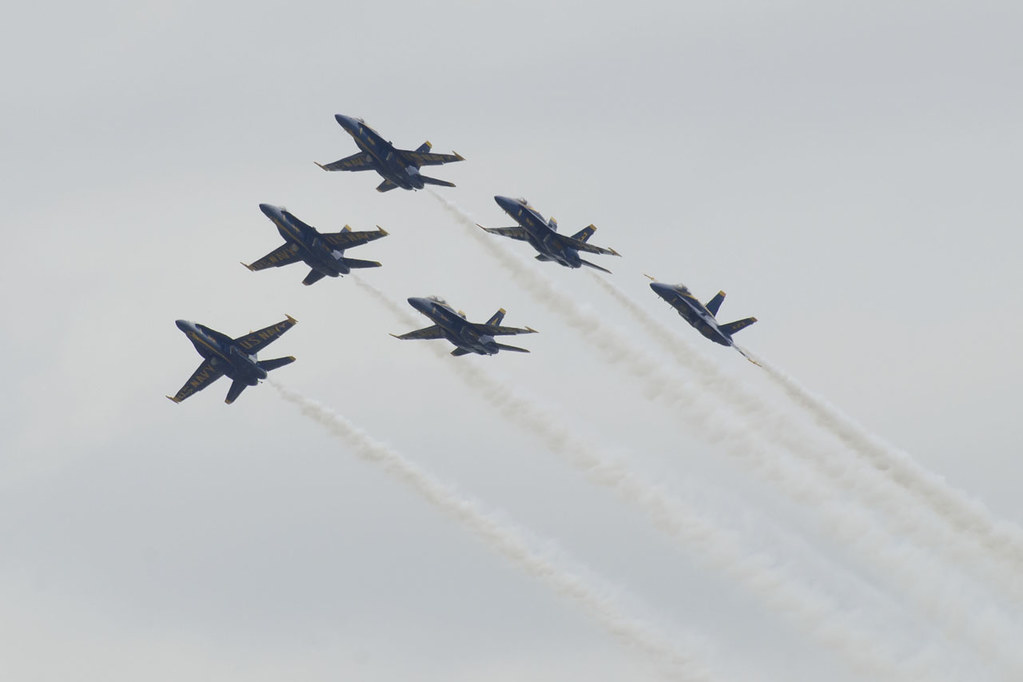
20.
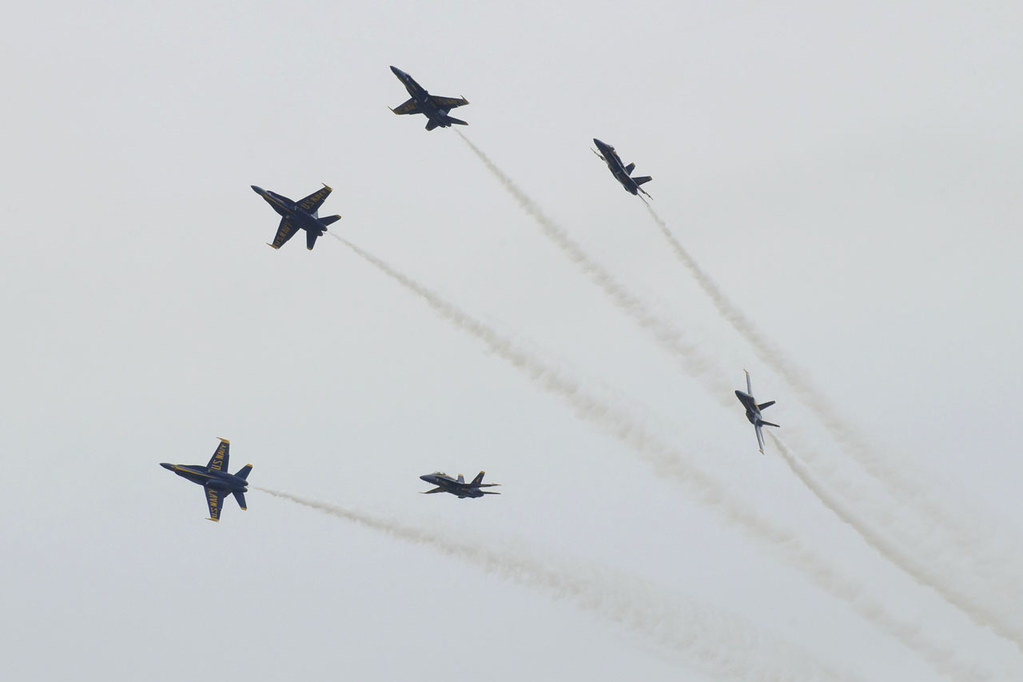
After the show, we headed into the museum, with about a thousand of our closest friends. The Naval Aviation Museum there is the largest collection of U.S. Navy and Marine flying history that there is, along with some significant pieces from other countries as well, from the very first aircraft purchased by the Navy, all the way up to current F/A-18s. There are more aircraft on display here than at the Smithsonian Air and Space museum. (Although the Smithsonian has a few extra significant pieces, like THE Wright Flyer, THE Apollo 11 capsule, THE Chuck Yeager Bell-X-1, THE Charles Lindbergh Spirit of St. Louis....)
On the tarmac behind the museum are many unrestored aircraft, some of which will simply stay out there as part of the collection, and some of which are destined for restoration. You can't actually walk among these aircraft, the area is roped off to keep us riff-raff out, but interested persons can take a bus tour that goes through the area.
21. Some of the not-ready-for-prime-time pieces.

22.
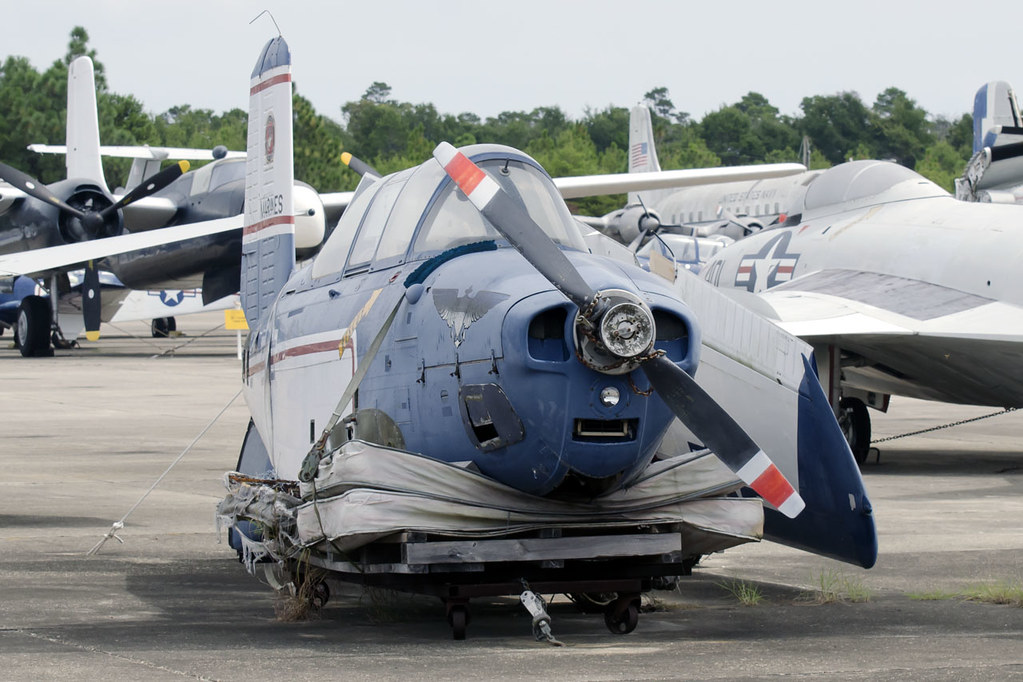
23. This one held my attention for a while, very intriguing... It's obviously a dive bomber, with those vented wing flaps, and there are floats!!!!!!! A little time with Google when I got home, and I think this is the XSB2C Helldiver seaplane variant. I say "the" because only one was ever made. It was apparently monumentally unsuccessful and the plan to build nearly 300 of them was scrapped. It's like the folks at Curtiss said to themselves, "OK, we've built one of the least useful, most hated and unflyable airplanes in the history of the world. What can we do to make it worse?" If that's what this is, that's a pretty cool thing to find!

24. Inside the museum now. Mr. artsy-fartsy camera guy has some fun....

25. A fisheye view of the same airplane.
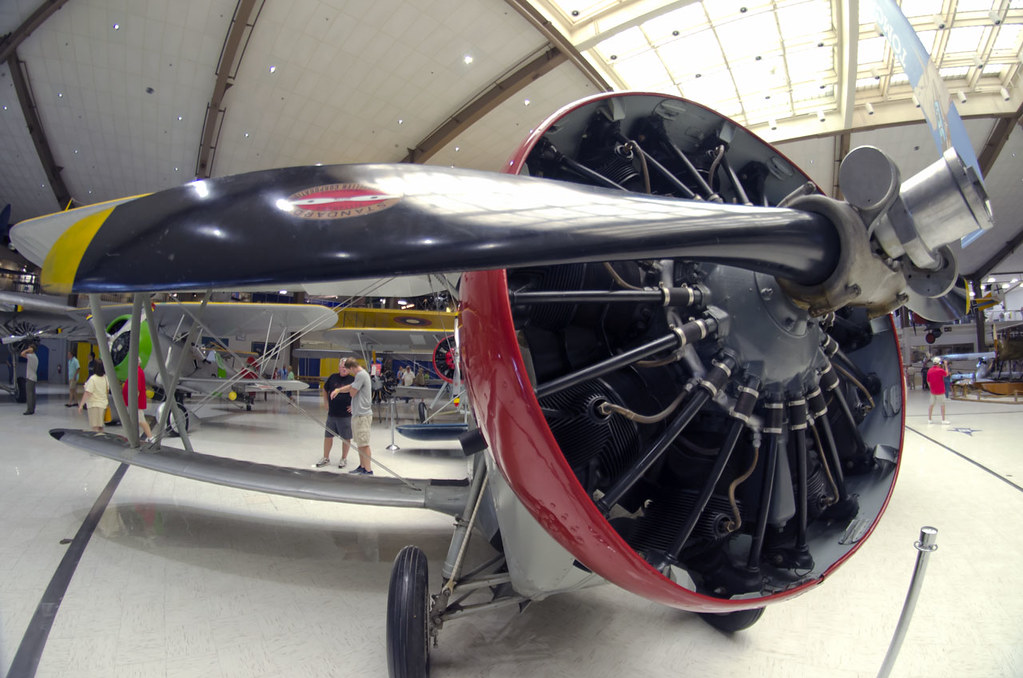
26. And another one. I was sitting on the floor in front of the wheel, next to the engine cowl. The propeller was actually behind me. That's the viewing angle these fisheye lenses give!
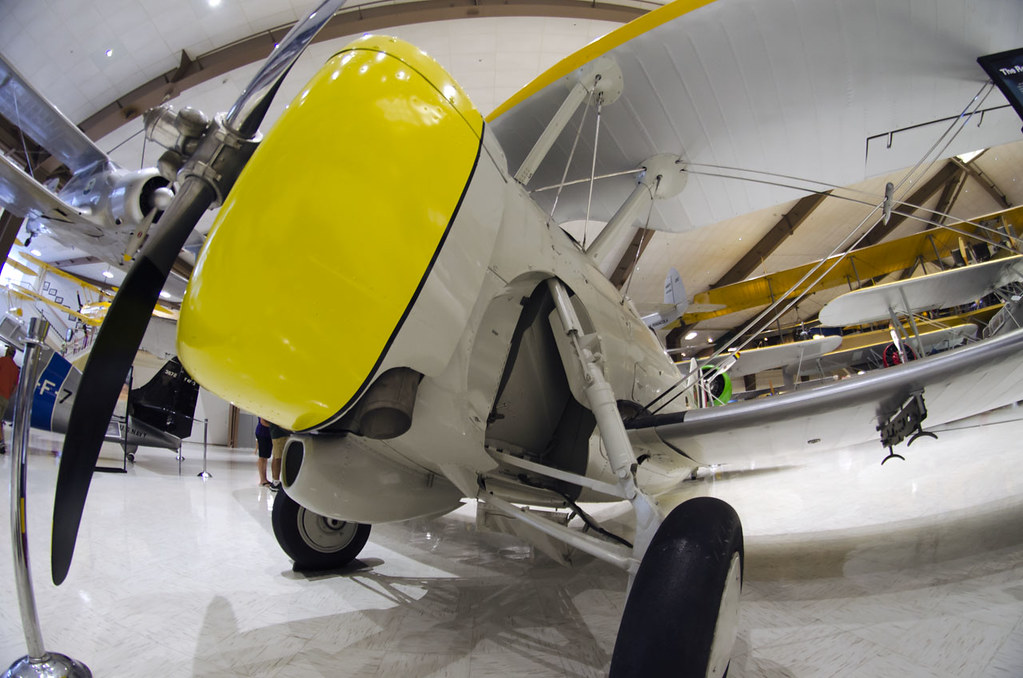
27. More fisheye fun.
The museum has TWO open spaces this size, plus a large entrance lobby and an atrium, and another separate building larger than this space, and THEN there are display areas around the perimeter of the upper level, a library, an art collection, a children's play area, a gift shop, an IMAX theater, a cafe, and simulator rides for folks with some extra money they don't need for anything else.
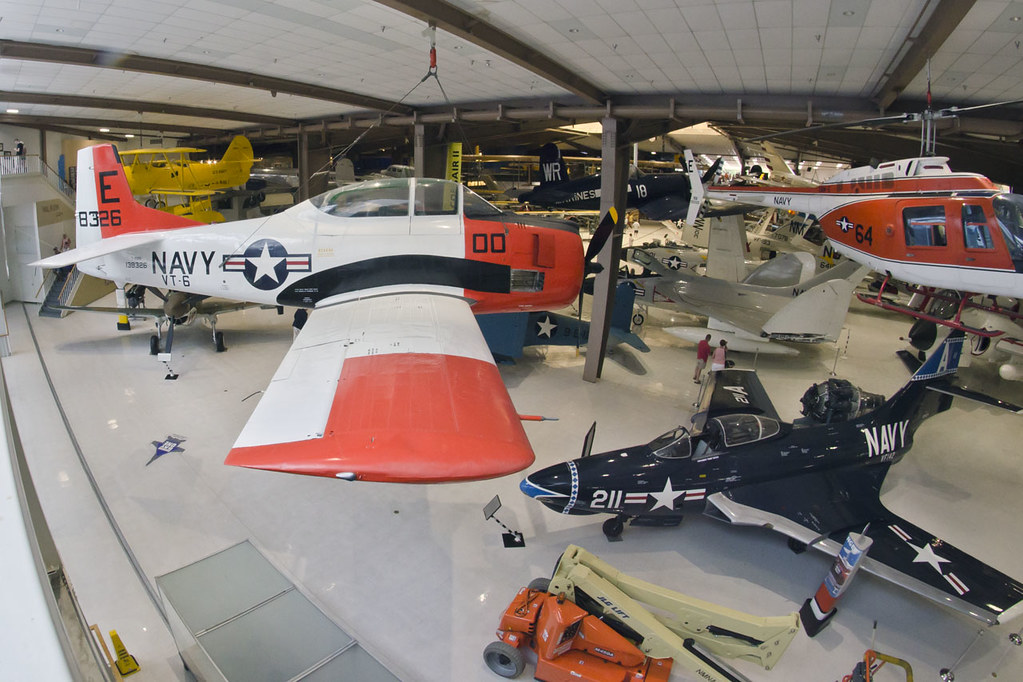
28. This is the atrium at the northeast corner of the building, with the Blue Angels' previous aircraft, the A-4 Skyhawk, hanging in formation. My lens didn't quite reach wide enough to take this in entirely, so I shot three overlapping views and assembled them. Just to make extra work for myself (but really to accommodate the bright skylights and the relatively dim interior of the background) each of those three views that I used was also a three-shot HDR, with the three shots being underexposed (to get the skylights,) correctly exposed, and then overexposed (to get the interior.) I combined the HDR of each of the three views, then stitched those into the final picture. Voila!
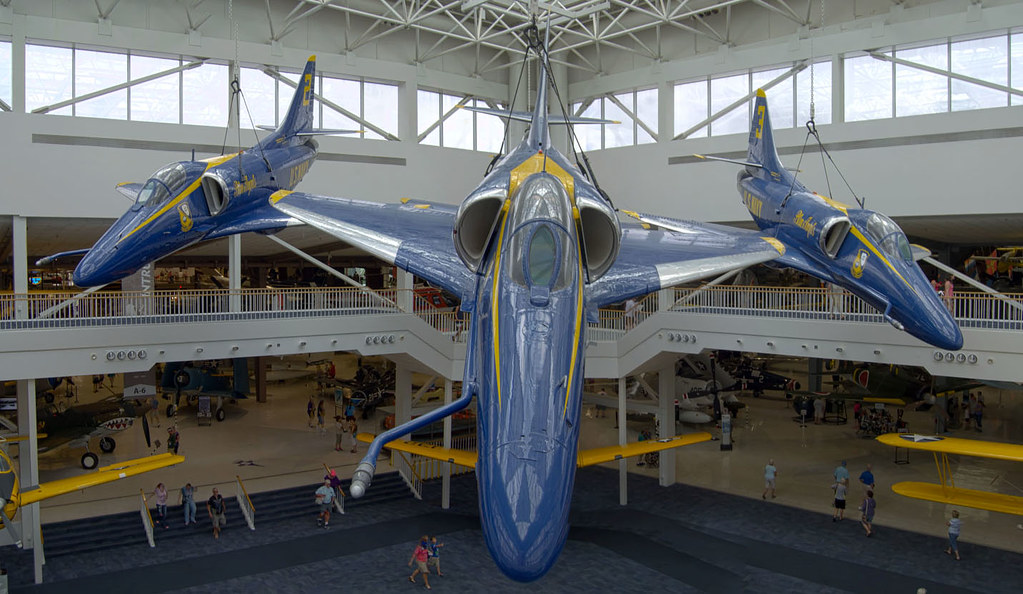
It was mostly sunny when we got there, but the weather turned into high overcast as the show began, although the clouds were high enough not to interfere. Still, they got thicker as the day wore on, making for difficult light for photography.
1. This is the formation taxiing out from the tarmac at show center. The practice session includes everything they do for a public demonstration, including the boarding and startup at the beginning.

2. Airborne before they reach our position. This is past the regular crowd area.

3. Heat haze from 1 and 2 obscuring 3 and 4.

4. The famous photo pass is just a slow circle starting from behind the crowd, coming in from the right, passing in front of the crowd, and exiting to the left in a steady continuous turn. As far right as we are positioned in the practice bleachers the entrance of the pass is very close, which made the formation easy to photograph and gave an interesting change in the initial point of view. Here you can see just how tightly they form for this pass, and you can also see how they offset each aircraft in the formation to the right rather than flying symmetrically, which gives the formation a better view from the perspective of the viewers on the ground. #3 and #4 keep their canopies 18 inches (!!!!!!!) under the wingtips of 1 and 2.

5. Continuing the pass. No room to spare between 3 and 2!

6. OK, that's pretty close there, dude.....

7. OVERLAPPING???!??!??! Seriously ???!??!!!

8. This shot from behind the formation shows that we were tricked by the perspective. He's actually got at least a foot, foot-and-a-half to the next guy's wing.....

9. "Let's go past them upside down!" "No, I don wanna." "Well, I'm gonna!!!"
Not only that, but with gear and tail hook extended.

10. And the diamond comes by with half inverted half upright

11. A couple of opposing passes by the solos...

12. In this one they're rolling as they pass

13. A couple of separation breaks the diamond makes

14.

15. One of the solo pilots pulling hard as he exits the flight line

16. The final maneuver of the demonstration is the Loop-Break-Cross, with all six in a delta formation entering a loop from the right.....

17. As they finish the loop, they break on the downward vertical and leave the area in six different directions

18. Each pilot flies outward about two miles, then does a half Cuban eight, returning to cross simultaneously at show center

19. And they're not done yet! The leader flies a long circle to the right, making a long left turn to end up coming straight back at the crowd from in front, and the other pilots maneuver as needed to reassemble the delta during that turn, with the reassembly in view of the crowd. It's really cool to be able to watch what each jet has to go through to get back on the leader after the crossing they just did, with everybody going a different direction and having about 30 or 45 seconds to get back in formation. Once the delta is reformed and coming straight at us, they make this dramatic arc-shaped separation as they approach.

20.

After the show, we headed into the museum, with about a thousand of our closest friends. The Naval Aviation Museum there is the largest collection of U.S. Navy and Marine flying history that there is, along with some significant pieces from other countries as well, from the very first aircraft purchased by the Navy, all the way up to current F/A-18s. There are more aircraft on display here than at the Smithsonian Air and Space museum. (Although the Smithsonian has a few extra significant pieces, like THE Wright Flyer, THE Apollo 11 capsule, THE Chuck Yeager Bell-X-1, THE Charles Lindbergh Spirit of St. Louis....)
On the tarmac behind the museum are many unrestored aircraft, some of which will simply stay out there as part of the collection, and some of which are destined for restoration. You can't actually walk among these aircraft, the area is roped off to keep us riff-raff out, but interested persons can take a bus tour that goes through the area.
21. Some of the not-ready-for-prime-time pieces.

22.

23. This one held my attention for a while, very intriguing... It's obviously a dive bomber, with those vented wing flaps, and there are floats!!!!!!! A little time with Google when I got home, and I think this is the XSB2C Helldiver seaplane variant. I say "the" because only one was ever made. It was apparently monumentally unsuccessful and the plan to build nearly 300 of them was scrapped. It's like the folks at Curtiss said to themselves, "OK, we've built one of the least useful, most hated and unflyable airplanes in the history of the world. What can we do to make it worse?" If that's what this is, that's a pretty cool thing to find!

24. Inside the museum now. Mr. artsy-fartsy camera guy has some fun....

25. A fisheye view of the same airplane.

26. And another one. I was sitting on the floor in front of the wheel, next to the engine cowl. The propeller was actually behind me. That's the viewing angle these fisheye lenses give!

27. More fisheye fun.
The museum has TWO open spaces this size, plus a large entrance lobby and an atrium, and another separate building larger than this space, and THEN there are display areas around the perimeter of the upper level, a library, an art collection, a children's play area, a gift shop, an IMAX theater, a cafe, and simulator rides for folks with some extra money they don't need for anything else.

28. This is the atrium at the northeast corner of the building, with the Blue Angels' previous aircraft, the A-4 Skyhawk, hanging in formation. My lens didn't quite reach wide enough to take this in entirely, so I shot three overlapping views and assembled them. Just to make extra work for myself (but really to accommodate the bright skylights and the relatively dim interior of the background) each of those three views that I used was also a three-shot HDR, with the three shots being underexposed (to get the skylights,) correctly exposed, and then overexposed (to get the interior.) I combined the HDR of each of the three views, then stitched those into the final picture. Voila!

Last edited by a moderator:



